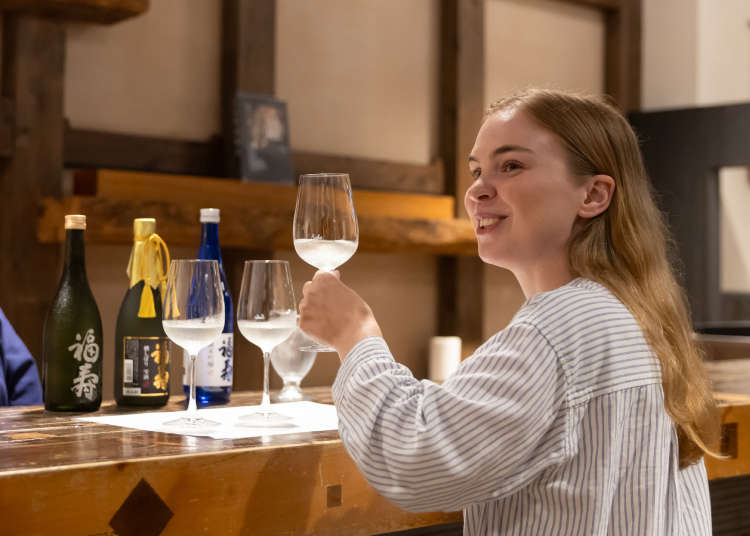
Curious About Sake? I Visited a Sake Brewery in Japan and Here's What I Learned
- Written by: LIVE JAPAN Editor
Japan is a country of rich culture, and sake, or Japanese rice wine, is a big part of it. Japanese sake can be enjoyed anywhere from smoky izakayas to high-end restaurants with stunning skyline views, and the more you start to learn about it, the more you realize just how deep this part of Japanese culture and history goes.
Japan has a long history of sake brewing, and the traditions and techniques vary depending on the region. That means that you can experience a broad variety of sake all over the country, and enjoy exclusive, area-limited assortments wherever you travel.
In this article, I, Johanna (LIVE JAPAN editor and Japan resident), will take you along to visit one of Japan’s most prominent sake-producing areas, to try out some sake, and learn about its history. I have little to no knowledge about sake and how to enjoy it, and am very excited to take you along as I uncover this part of Japanese culture!
Kobe’s Reputation For Sake
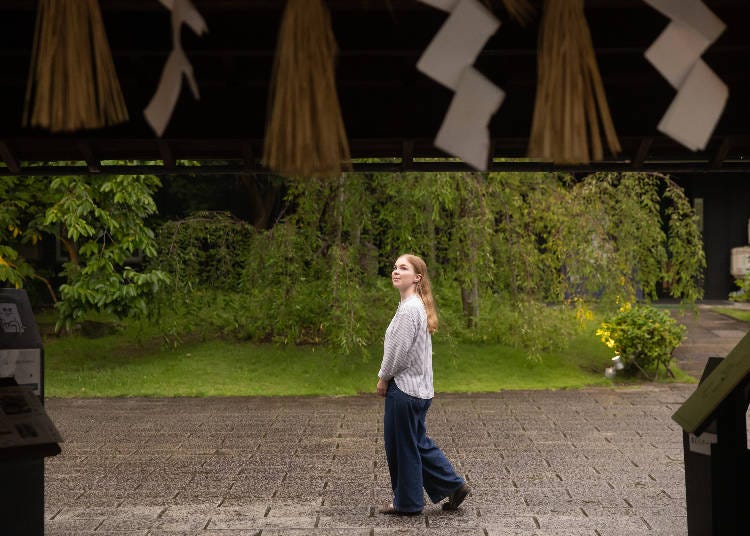
So, where are we headed? Today we are visiting the Nada district in Kobe! You may already know Kobe, a port city in the Kansai area famous for its beef and bay views. Did you know that Kobe is also one of Japan’s most important sake-producing regions?
The Nada district, especially the Nada Gogo, or “Five Villages of Nada”, is one of Japan’s most important sake-producing regions. With cold winds from Mount Rokko, mineral-rich water known as Miyamizu, and access to top-grade sake rice, the area has long been considered ideal for brewing sake. In fact, nearly one in four bottles of sake made in Japan comes from here, making it a must-visit for anyone curious about the world of sake!
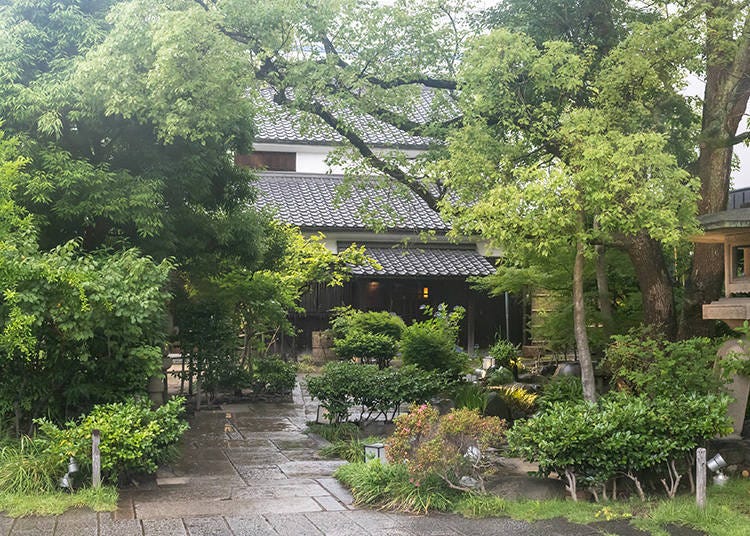
Nada Gogo is made up of five sake-producing areas stretched along the coast between Kobe and the neighbouring city of Nishinomiya. It’s easy to explore, as many breweries are open to visitors and can be reached by train or even on foot. The area is popular for brewery-hopping, where people try different sake at each stop and compare the flavors.
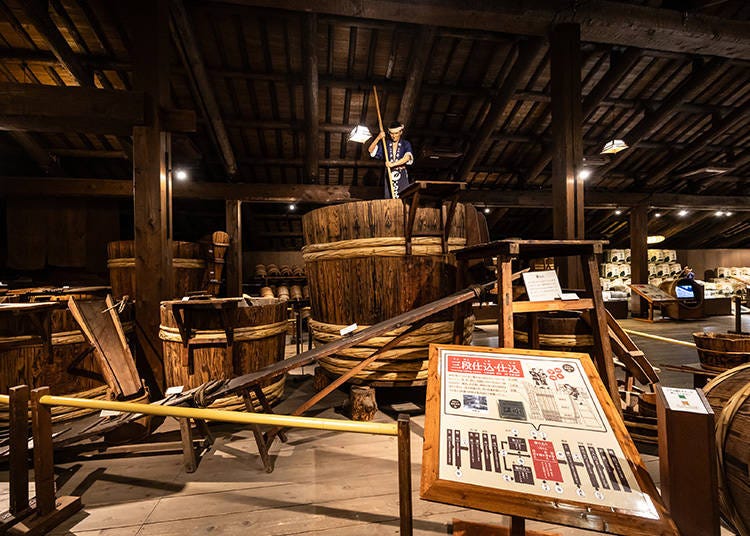
Some places have traditional tasting rooms, others have museums that explain the history of sake and how it’s made using local natural resources like water and rice. You’ll also find shops with unique bottles and restaurants where you can enjoy sake paired with Japanese dishes.
This time, I am visiting a place that brings all of this together in one experience! Let’s head over to the Kobe Shushinkan Brewery.
Discovering Kobe Shushinkan Brewery
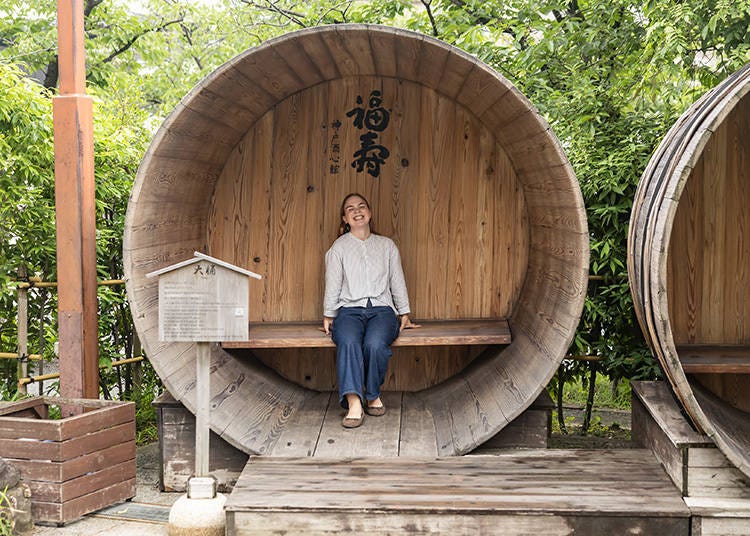
Kobe Shushinkan Brewery is a laid-back yet charming spot right in the heart of Nada. With its warm wooden interiors and rows of sake barrels, it’s the perfect place to learn about sake, taste different varieties, and enjoy delicious Japanese food - all without feeling overwhelmed, even if you’re new to sake (like me!).
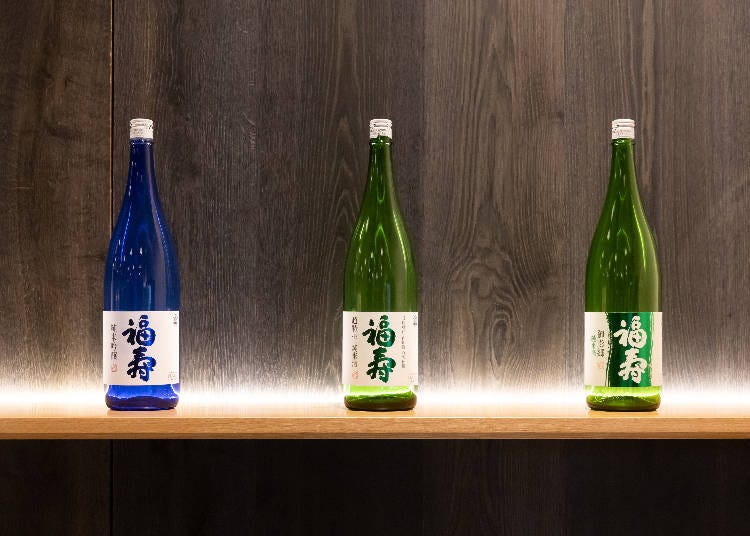
This brewery produces the “Fukuju” sake, famously known for having been served at the Nobel Prize Banquet on several occasions since 2008. They offer tours in several different languages, including English, Chinese, Korean, and Portuguese, and the staff is knowledgeable and friendly, taking you around the facility and introducing you to the history and charm of the brewery.
Exploring Sake and History at Fukuju-gura
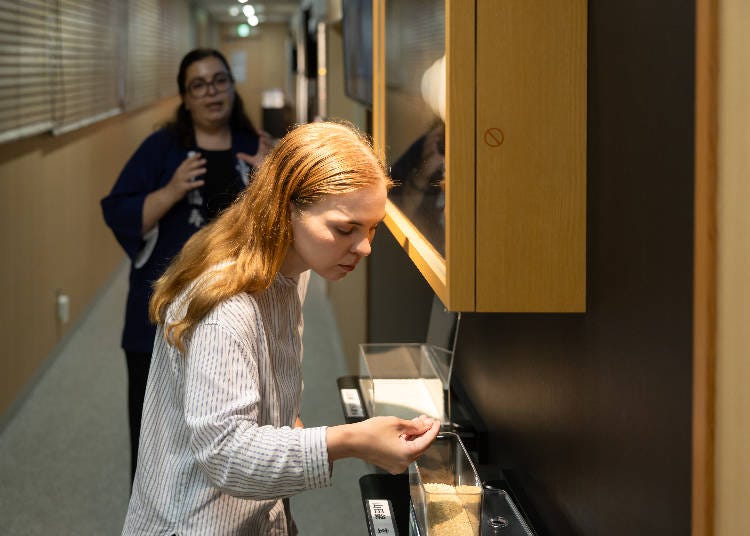
While there are many different facilities around the Nada area to explore, Kobe Shushinkan allows visitors to enjoy the full range of sake experiences: a guided tour for learning about the background and production of their local sake, the classic “nomikurabe” sake tasting, and finally a sake pairing experience with a range of local dishes! I started off with the tour at “Fukuju-gura” to understand the background of the sake before actually trying it.
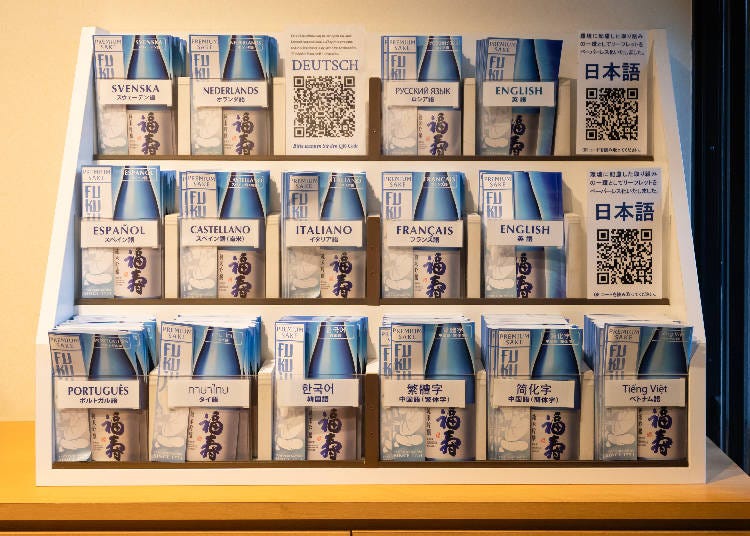
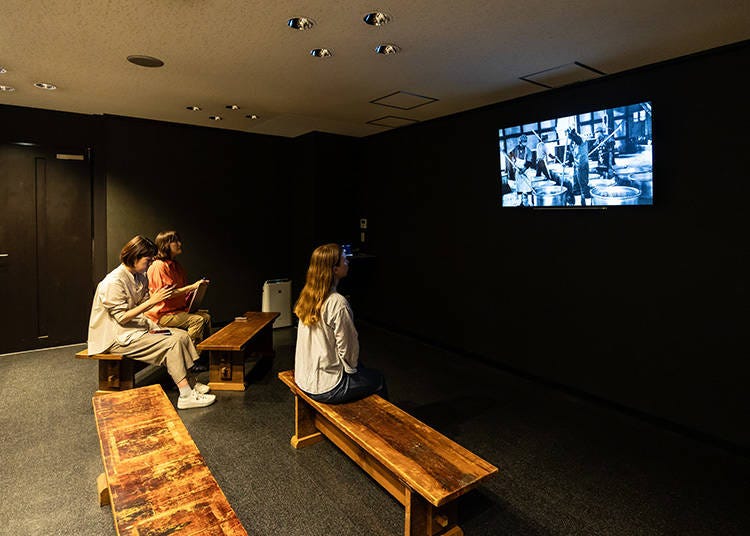
My first introduction to Kobe Shushinkan, its background, and its present-day operations came through a brief introductory film. It shared the history behind Fukuju sake, how sake has traditionally been brewed at the facility, and how the craft has evolved into its modern form today. If you’re not familiar with how sake is made, this is a great opportunity to get a clear and easy-to-understand overview, before getting to the actual tasting!
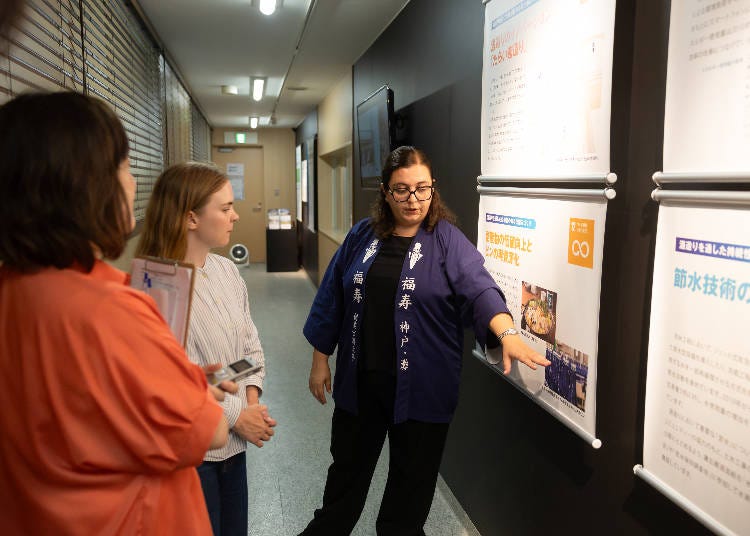
My guide for the day was the lovely Cinzia from Italy. She explained that since sake is made from just three ingredients (rice, water, and koji mold), the quality of each ingredient is very important in order to produce high-quality sake. I learned that Kobe Shushinkan uses rice grown by local farmers in Kobe’s northern ward and water from the nearby Rokko mountains. This special water, called Miyamizu, is full of minerals and perfect for brewing sake because it has an extremely low iron content.
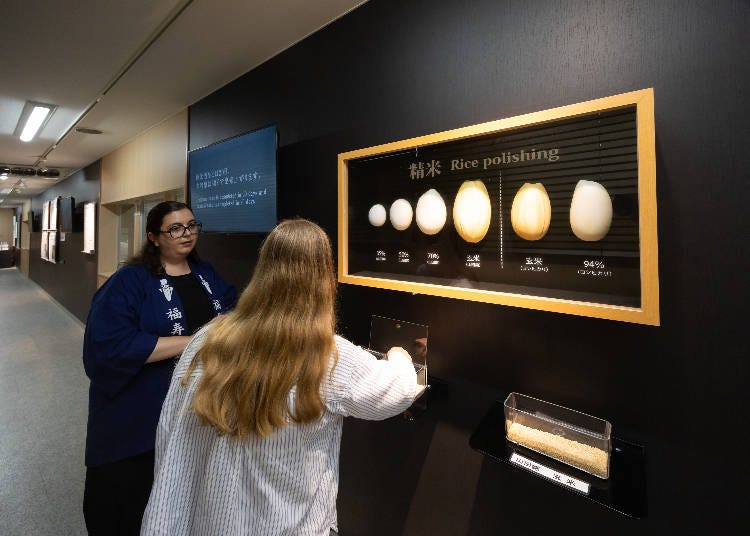
The process of sake brewing starts with a single rice grain, and how much each grain is polished dramatically affects the final product! The rice used for sake brewing is cultivated specifically for making sake, with characteristics suited to the brewing process rather than everyday meals.
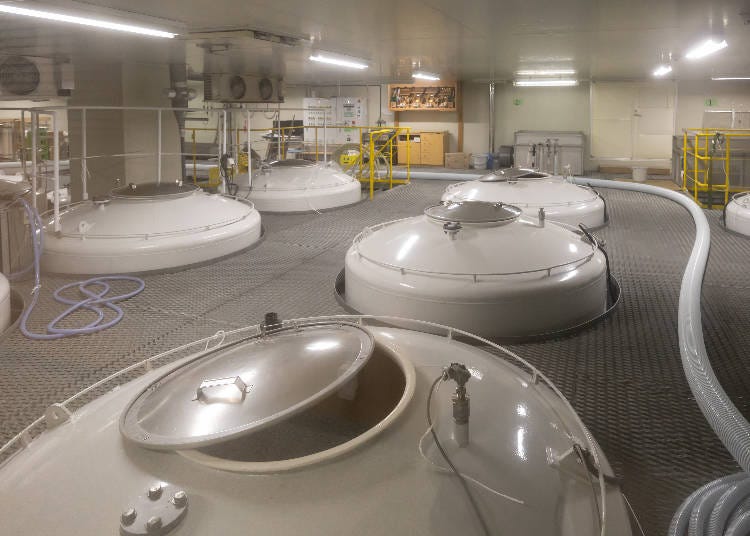
Cinzia brought me up to the 4th floor, where she pointed out the brewery visible through large glass windows. As we walked along, she explained each step of the modern-day sake-making process at Kobe Shushinkan, which was quite fascinating, having just learned how the brewing process looked before modern technology came into the picture.
Guided & Beginner-Friendly Sake Tasting
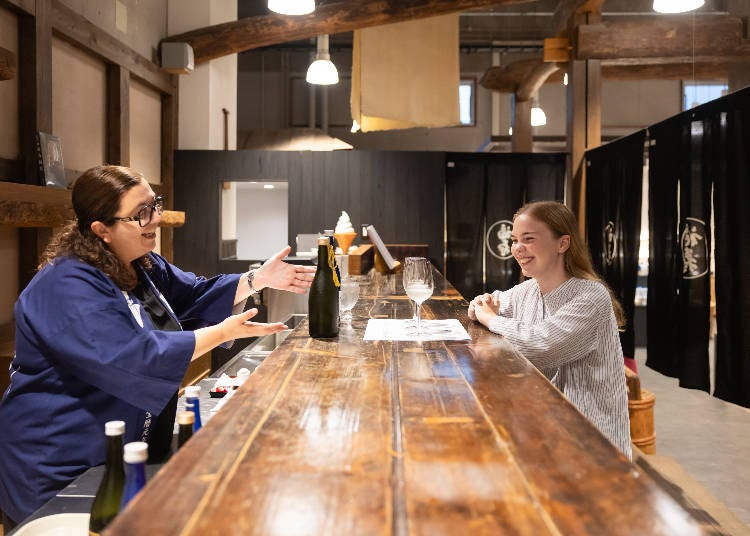
With my newfound knowledge of how sake is made, I followed Cinzia to the bar area for a private tasting session. If, like me, you don’t have much experience with Japanese sake, it can be hard to fully appreciate just one sip of a single type. Tasting a lineup of different sakes, each with distinct characteristics, makes it much easier to notice the differences. And if you have a bit of a discerning palate, you might even pick up on more than just the dryness or alcohol level.
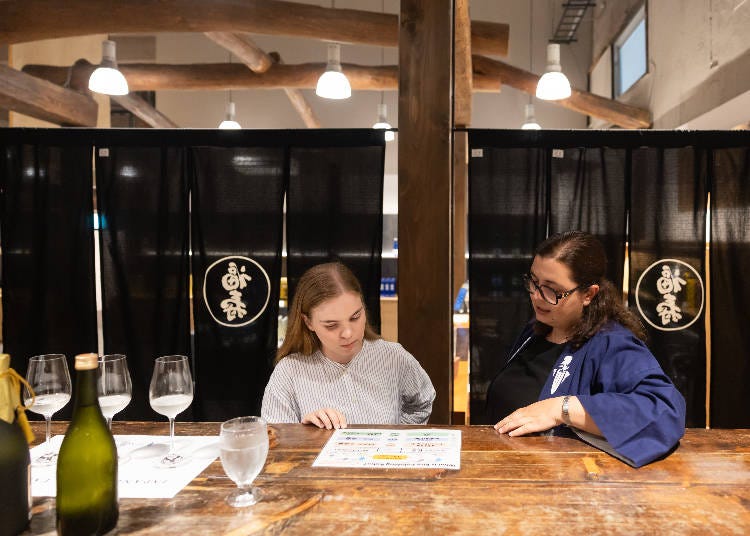
One question had lingered in my mind since learning about the rice grain polishing process during the initial guided tour: what effect does the polishing have on the sake? Does it determine the dryness, alcohol content, or something else? I brought this up during the tasting, and Cinzia came over with a helpful chart to explain.
She explained that the outside of the rice grain has fats and proteins that can cause strong or unwanted tastes. Polishing removes the outer parts to get to the pure, starchy center. The more the rice is polished, the lighter, cleaner, and smoother the sake usually is. Less polishing means the sake keeps more of the rice’s natural rich and full flavor. Polishing doesn’t directly affect how dry the sake is or how much alcohol it has, but rather the overall taste and body.
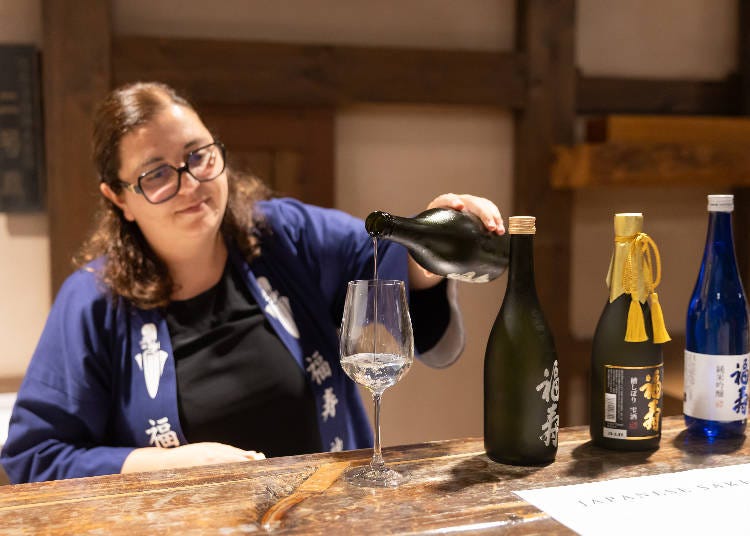
The tasting featured three carefully selected Fukuju sakes. First was the “Daiginjo Shizuku Sake Jewelry Bottle,” which I thought had a fruity aroma and a clear punch after taking a sip. Next, I tried the “Junmai Daiginjo Fune Shibori Shizuku Sake,” pressed using a traditional method, delivering a rather smooth and mellow flavor. Finally, there was the classic “Junmai Ginjo,” with a rich rice flavor and served at official Nobel Prize events held in Sweden. I had been especially intrigued to try the latter, knowing that it had a special connection to my home country!
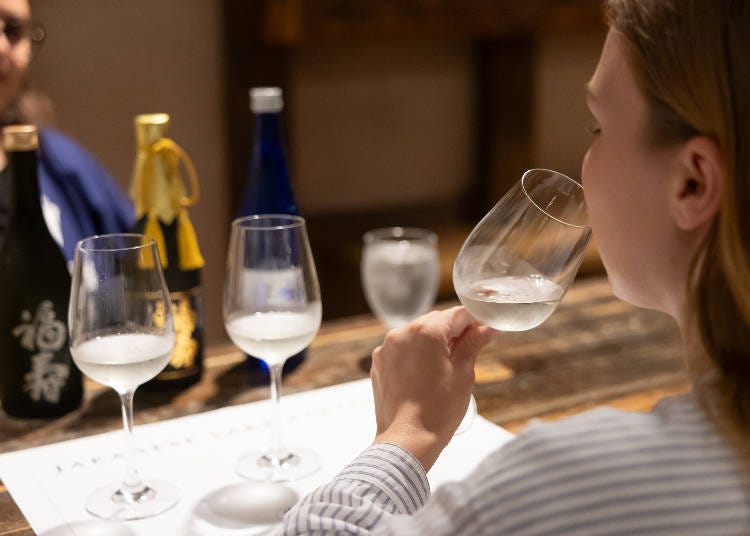
Don’t worry if you struggle to distinguish the different aromas and flavors after just one round. Take your time to smell and taste and go a couple of rounds between the glasses, and you will for sure start to catch on!
I thoroughly enjoyed the taste testing experience. It gave me the chance to truly savor and appreciate the different sakes while learning about their origins, rather than just quickly sipping a few cups without much thought at a local izakaya on a night out. There is a time and place for that kind of fun, too, of course, but this was a fantastic learning experience I’m glad I had.
Sake and Food Pairing at Sakabayashi
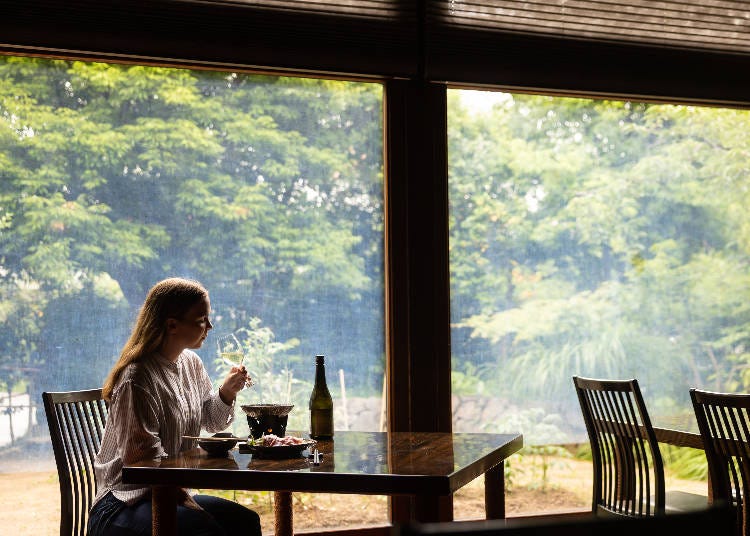
After exploring the brewery and tasting different types of sake, I headed over to Sakabayashi, Kobe Shushinkan’s on-site Japanese restaurant. Housed in a beautifully renovated former sake storehouse, Sakabayashi offers a number of “kaiseki” meals, which are multi-course Japanese cuisine known for seasonal ingredients, and often with an elegant presentation. The courses at Sakabayashi include pairings with a lineup of Kobe Shushinkan’s signature sake, each sake carefully selected to complement the unique flavors and character of each dish.
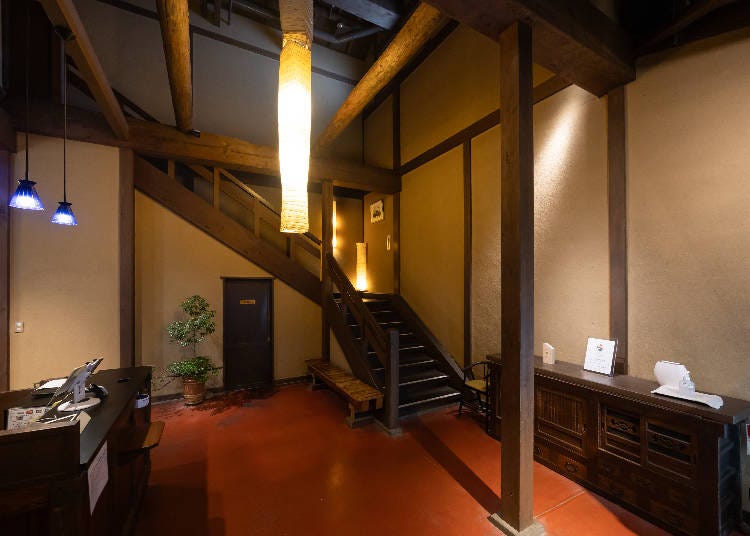
The interior really set the tone for the experience, with its elegant, traditional Japanese house atmosphere.

I had chosen the Standard Brewery Tour & Kaiseki Course, which combines a guided sake tour, a three-sake tasting, and an eight-course seasonal kaiseki meal. My trusted guide for the day, Cinzia, explained each dish and introduced the sake pairings and their specific qualities.
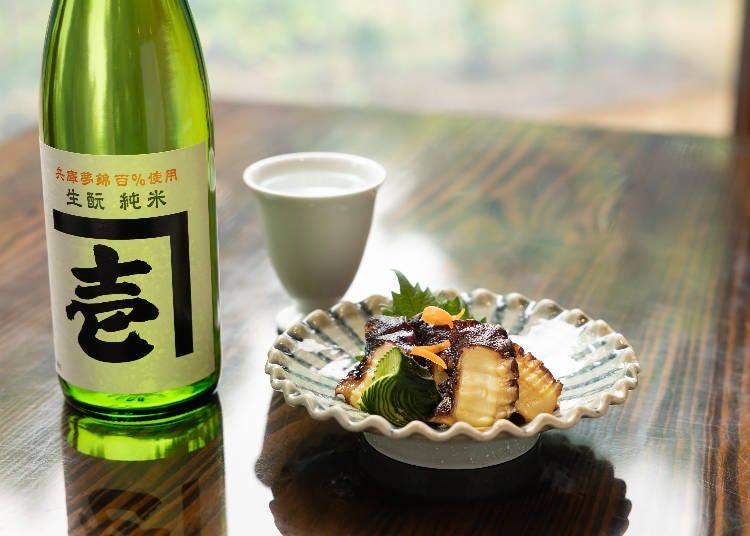
Some of the highlights of the course included Smoked Akashi Octopus (caught in the Akashi Strait in Hyogo Prefecture) paired with Kimoto Junmai “Ichi,” a full-bodied sake with subtle sweetness to complement the octopus’s smoky, rich flavor.
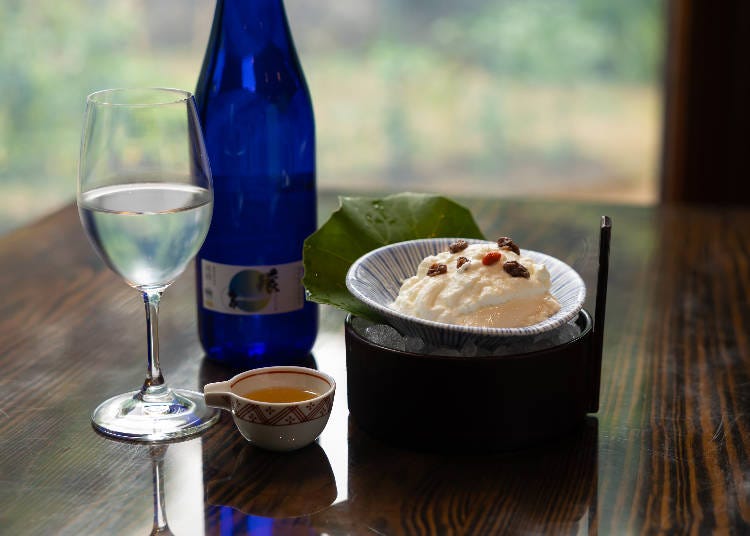
Another dish I really enjoyed was the Fromage Frais Tofu with Honey, paired with Fukuju Junmai Ginjo Yamada Nishiki Meguru. The smooth, rich house-made tofu combined with local fromage frais and honey matches nicely with the fruity notes of the sake, which is brewed using sustainably and locally grown Yamada Nishiki rice.
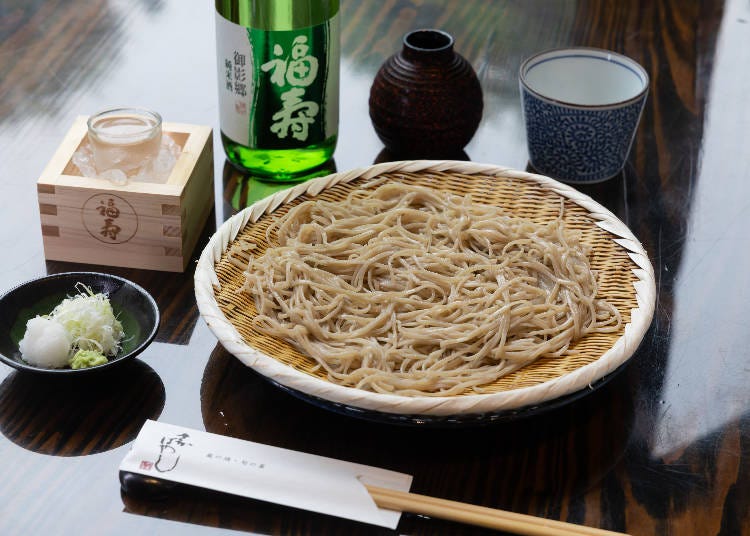
Another staple on the course menu was soba paired with Fukuju Junmai Sake. The thin soba noodles are freshly made every day, and here you enjoy them by pouring a small amount of junmai sake over the noodles before eating! This is called Sake Soba. Cinzia told me this custom goes way back, when people would pour sake over soba noodles to soften them, as the noodles tended to get stiff while everyone was chatting before the meal began.
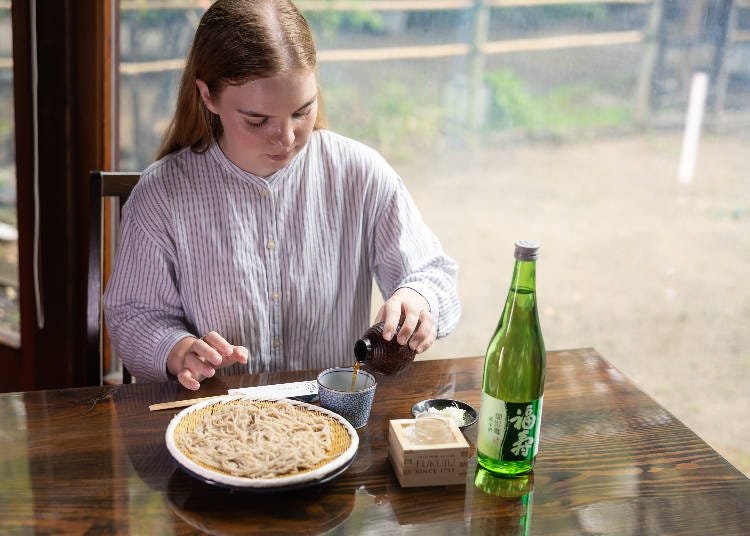
After you’ve poured the sake over the noodles, you can go ahead and dig in! Make sure to try a bite before you prepare the tsuyu sauce and additional cut leek, to get a clear taste of the sake infused soba. I enjoyed the subtle hint of sake, it wasn’t overpowering, just enough to add an interesting twist.
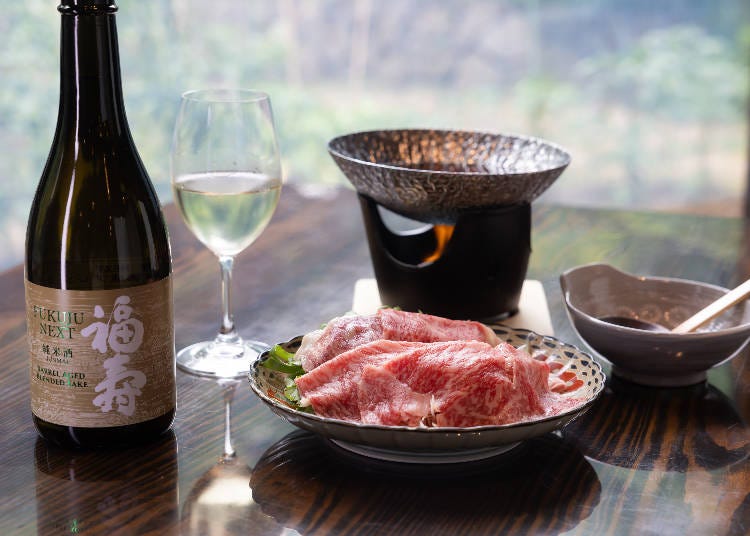
Drumrolls, for the finale! I hope you’re not forgetting that we are in Kobe right now, home to fantastic wagyu beef. This dish is called the Kuroge Wagyu Harihari Hot Pot, highlighting the umami of tender wagyu beef alongside mizuna greens. The wagyu dish is paired with Fukuju NEXT Junmai Sake Barrel-Aged Blend, with vanilla notes and a whisky-like finish.
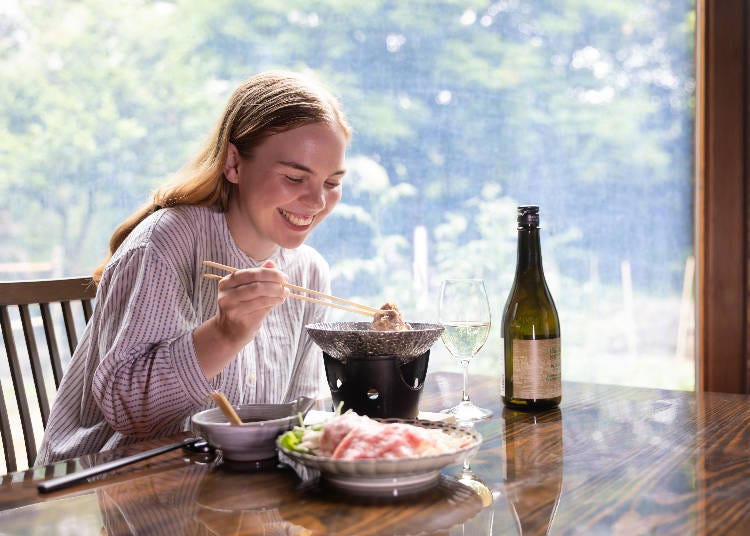
Now this is the face of someone about to try Japanese wagyu beef for the first time. If you’ve ever experienced wagyu beef, you’ll understand my excitement. And if you have yet to try this heavenly, tender piece of beef, you are in for a big treat. For those wanting to try the legendary Kobe Beef, Sakabayashi also offers a Kobe Beef Hot Pot Kaiseki course!
This was a lovely opportunity to learn more about sake, while getting to try a range of delicious local dishes. Definitely consider stopping by Sakabayashi when you’re visiting Kobe Shushinkan.
Souvenir Hunting at the Shushinkan Shop
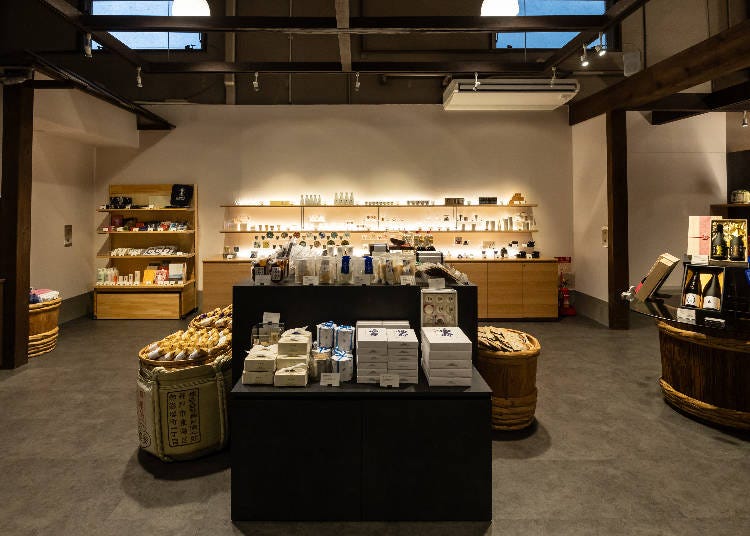
Don’t miss a visit to the gift shop Tomyo-gura before you head out! Unlike the more guided and in-depth sake tasting experience I had this time, here you can enjoy a casual free sake sampling to try different varieties before choosing your favorite bottle to take home.
The shop offers a wide range of Kobe Shushinkan’s signature sakes, including limited editions and seasonal brews. Besides sake, you’ll find sake-flavored sweets, traditional cups, and other unique souvenirs, perfect for gifts or a special memento from your visit.
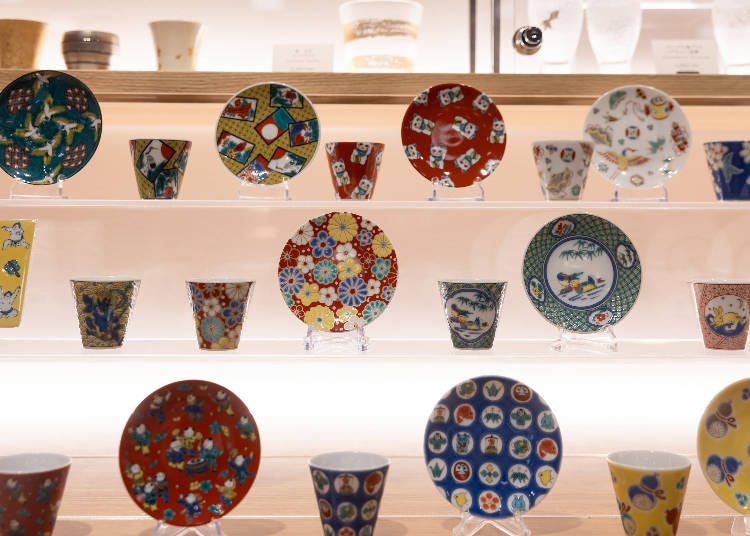
I found a wide range of cups and plates to enjoy sake at home, and especially liked these themed and colorful ones! Cinzia let me know that these designs have drawn inspiration from traditional and popular Japanese patterns and symbols.
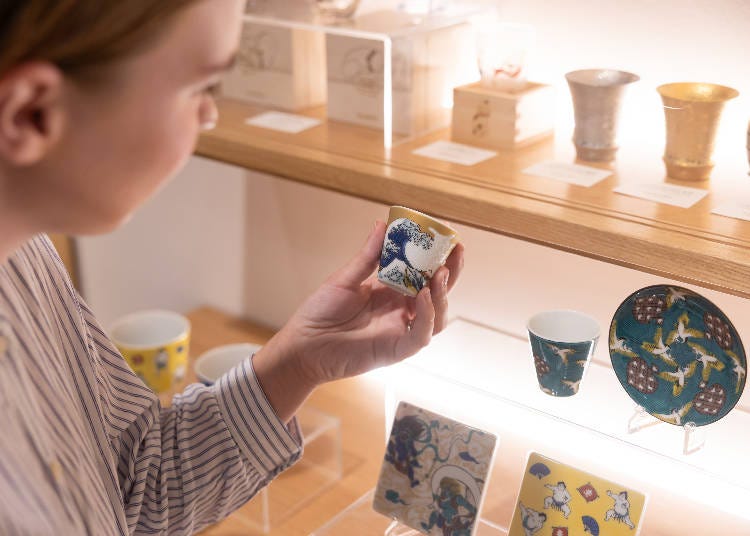
Among the designs, the famous “The Great Wave off Kanagawa” print by Katsushika Hokusai is apparently a best-seller!
And with a final walk around the gift shop, that concludes my visit to Kobe Shushinkan. This was a great opportunity to learn about sake - not just about how to enjoy the beverage and how to tell dry from aromatic, but also about the traditions and history behind this deeply rooted tradition. Whether you are a beginner at sake like me, or want to deepen your knowledge and explore regional traditions, Kobe Shushinkan is a fantastic destination!
-
Kobe Shushinkan Brewery神戸酒心館
- Address 1-8-17 Mikagezuka-cho, Higashinada-ku, Kobe 658-0044
Hours: 10 AM - 6:30 PM
Closed: Wednesdays
Other Breweries to Explore in Nada Gogo
If you are staying in Nada Gogo over the day, there are plenty of other breweries and shops to explore in the area, too! Each brewery has its own unique character, and you can learn something new at every stop, whether it’s about brewing methods, history, or tasting styles. Many breweries produce their own sake right on site, so it’s also a fun way to compare different flavors and find your personal favorite. Here are a few spots I’d recommend checking out.
Hakutsuru Sake Brewery Museum
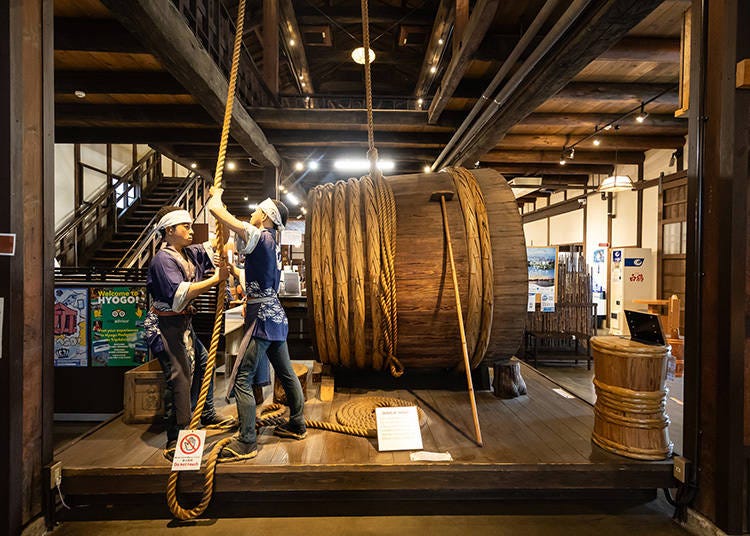
Hakutsuru Sake Brewery Museum is located in the eastern part of Nada, and is housed in a preserved Taisho-era brewhouse. With free admission, informative exhibits, displays featuring real tools once used in brewing and life-sized human figures, and a self-guided tasting corner, it offers a great introduction to traditional sake-making. There’s also a shop selling rare Hakutsuru brews and museum-only goods.
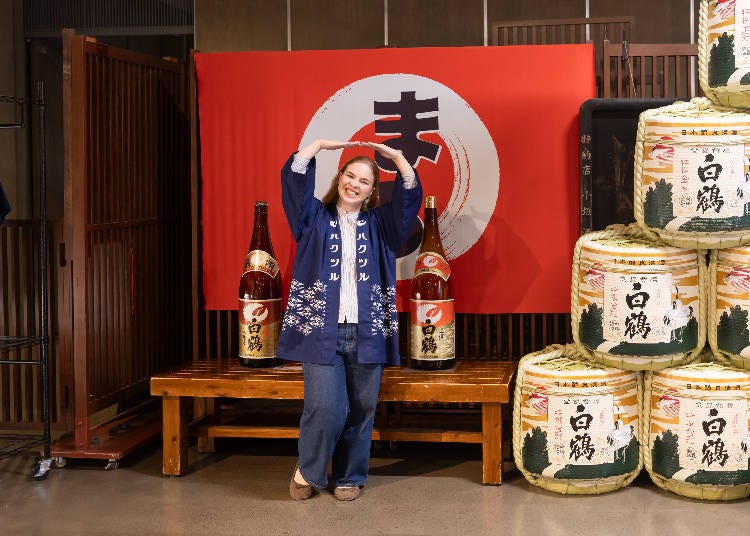
At Hakutsuru Sake Brewery, you’ll spot plenty of nods to their beloved ‘Maru’ commercials, which have been popular for over 40 years, including a photo spot filled with fun props related to the iconic series! Inspired by the commercial, visitors can strike the same circle shape with their arms for a fun photo in front of the red ‘Maru’ flag.
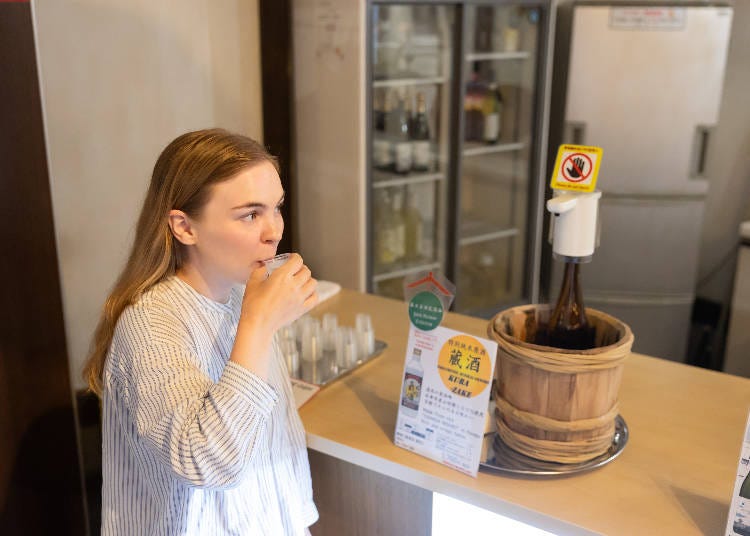
At the Hakutsuru Sake Brewery Museum, you can try three kinds of alcoholic beverages for free! When I visited, they were Junmai Genshu, a shop-exclusive Honjozo Karakuchi, and a cloudy Yuzu Sake with plenty of refreshing citrus flavor. I personally loved the Yuzu Sake! In addition to these, there are paid tastings available, including limited-edition brews that change every few months, so there’s always something new to discover.
-
Hakutsuru Sake Brewery Museum白鶴酒造資料館
- Address 4-5-5 Sumiyoshi Minami-cho, Higashinada-ku, Kobe 658-0041
Hours: 9:30 AM - 4:30 PM
Closed: Thursdays & Fridays
Hakushika Classics
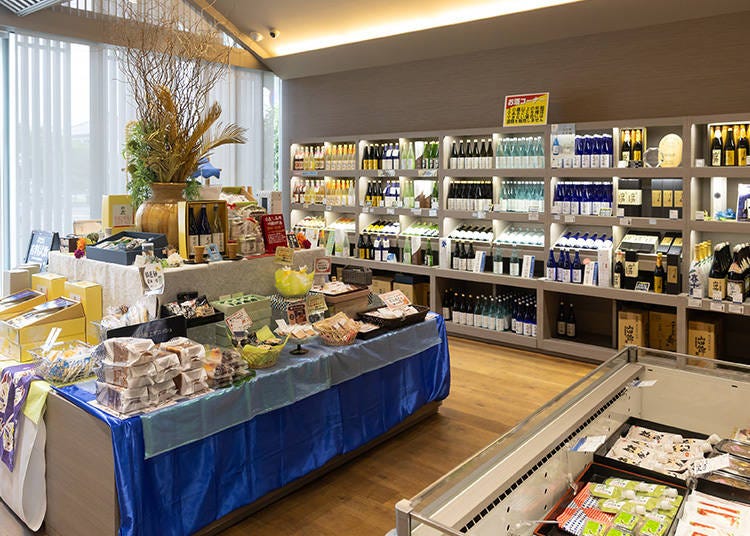
Hakushika Classics is a brewery-owned shop and restaurant just a 10-minute walk from Hanshin Nishinomiya Station. It features both a restaurant and a shop where you can enjoy Japanese sake and food culture. The restaurant serves dishes like kasujiru hot pot, buckwheat soba and tempura, paired with a wide range of sake. The shop offers exclusive sake and original goods, along with a tasting bar where you can sample various sakes before purchasing.
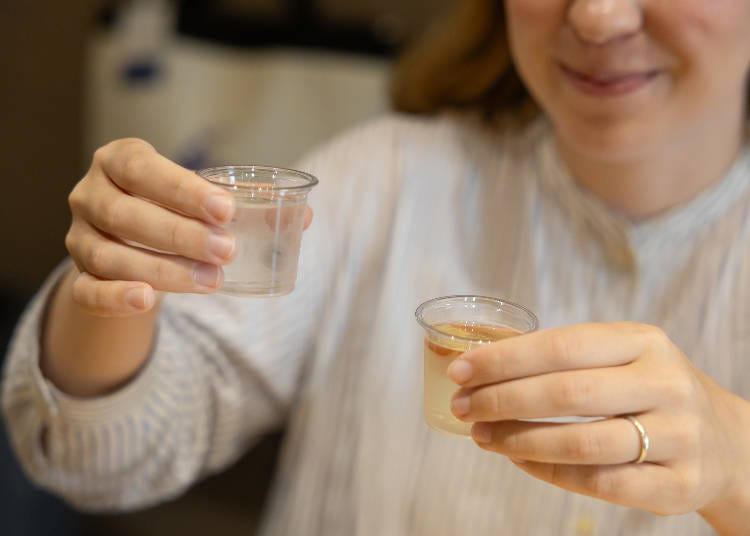
At the tasting bar, I had a try at two special limited-edition sakes as a set for 300 yen. I chose a summer-style junmai namachozo, which was fresh and really quite enjoyable! The other was a Nishinomiya-go daiginjo, a premium sake which had a smooth taste and fruity aroma. Other tastings are also available, priced between 100 and 400 yen each.
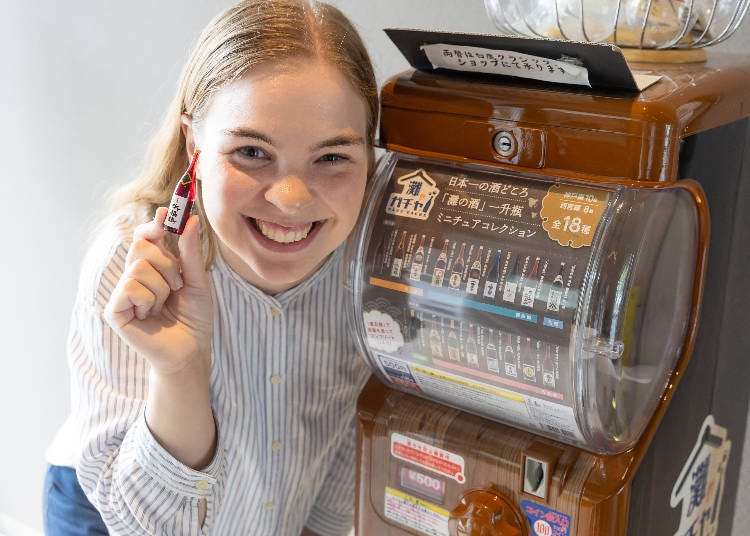
Oh my lord, a sake gacha?! Right in front of the entrance to the restaurant, I found this “Nada Gacha” with a collection of miniature sake bottles of Nada-original sake brands for 500 yen each. I don’t know who could resist grabbing one, I for sure couldn’t!
-
Hakushika Classics白鹿クラシックス
- Address 7-7 Kurakake-cho, Nishinomiya-shi, Hyogo 662-0926
Hours: 11 AM - 2:30 PM; 5 PM - 9 PM
Closed: Mondays & Tuesdays
Kiku-Masamune Sake Brewery Museum
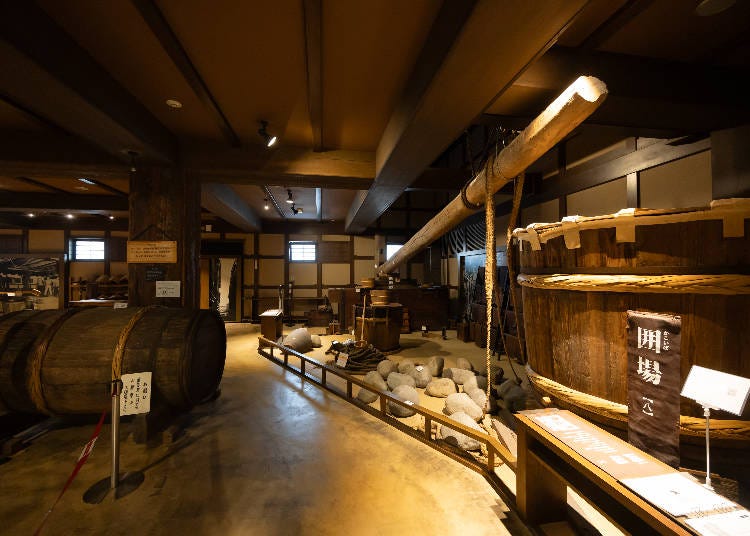
Kiku-Masamune Sake Brewery Museum offers a hands-on look into the history and craft of traditional sake brewing in the Nada district. Inside the restored brewery building, I found exhibits of brewing tools, got to learn about sake-making techniques, and enjoyed tastings of some of Kiku-Masamune’s signature sakes! This is a free, easy stop for anyone wanting to experience both sake culture and local history in one visit.
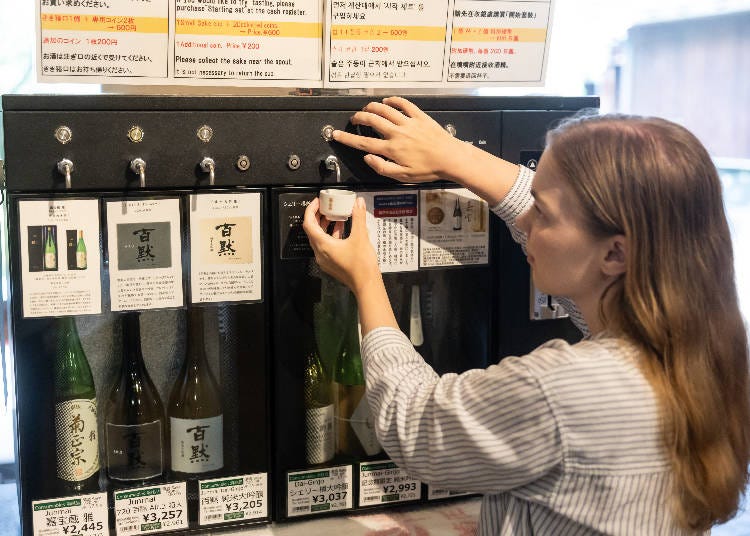
I really enjoyed this vending machine-type of sampling experience, where I paid for a couple of coins at the counter that I could use to try a number of different sake. You can also try samples from the counter, and the friendly staff were quick to help me and give me recommendations!
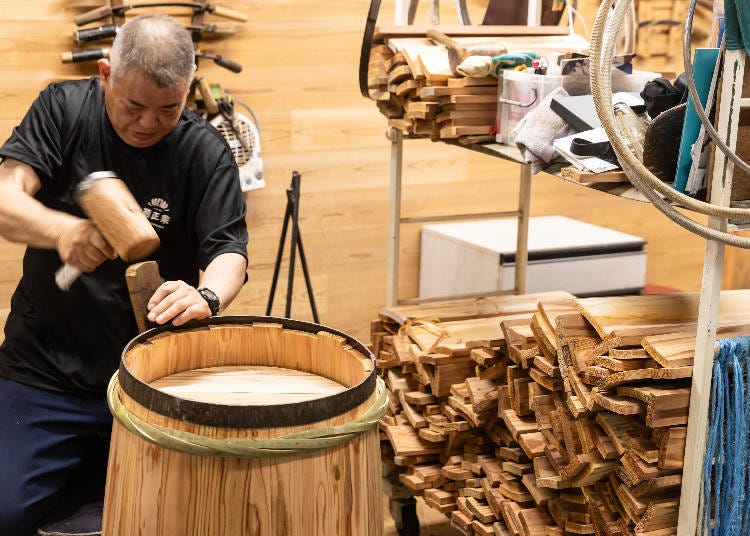
One of my most unforgettable experiences on my Nada Gogo tour was at the Taru Sake Meister Factory at Kiku-Masamune. If you make a reservation ahead of time, you’ll get the chance to watch the traditional craft of barrel-making by a skilled craftsman, who will piece together a sake barrel entirely by hand. These barrels are traditionally made of Yoshino cedar, and sake stored in them, known as Taru Sake, takes on a uniquely crisp cedar aroma and flavor.
The strength and precision needed to piece together these barrels was nothing less than fascinating to witness, and I am sincerely glad that I got to experience this up close.
-
Kiku-Masamune Sake Brewery Museum菊正宗酒造記念館
- Address 1-9-1 Uozaki Nishimachi, Higashinada-ku, Kobe-shi, Hyogo 658-0026
Hours: 9:30 AM - 4:30 PM
Closed: None
Visiting Nada Gogo? Here Are My Beginner-Friendly Tips!
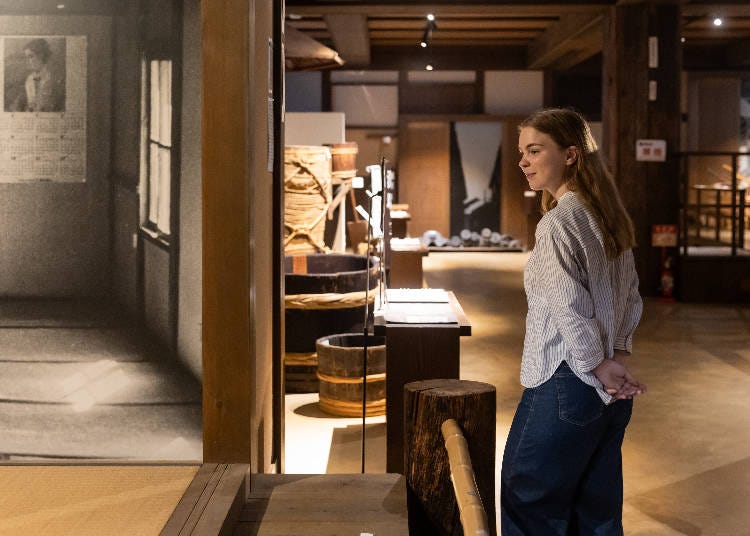
If you’re curious about Japanese sake, definitely consider a trip to Nada Gogo, whether you’re a total beginner or already know a thing or two! There are plenty of breweries in the area, each with its own character, making it fun to compare both the sake and the atmosphere. When visiting, take your time to enjoy both the learning and tasting experiences, ask the staff if you have questions, and be sure to grab a souvenir or two on your way out! And a quick tip from a sake-tour newbie: pace yourself and make sure to drink water along the way - there’s a lot to try!
(*This article was originally published in August 2025. Please check official websites for the latest information.)
The LIVE JAPAN editorial team is a multinational group made up of native editors who have lived in Japan for over five years and Japanese editors who love to travel. Together, we share the best of Japan, offering cultural insights, historical context, event updates, and travel-friendly deals, to support your journey every step of the way.
- Area
- Category
*Prices and options mentioned are subject to change.
*Unless stated otherwise, all prices include tax.
Popular Tours & Activitiess
Recommended places for you
-

Kanzenkoshitsuyakinikutabehodai Gyugyu Paradise Sannomiya
Yakiniku
Kobe, Sannomiya, Kitano
-
Goods
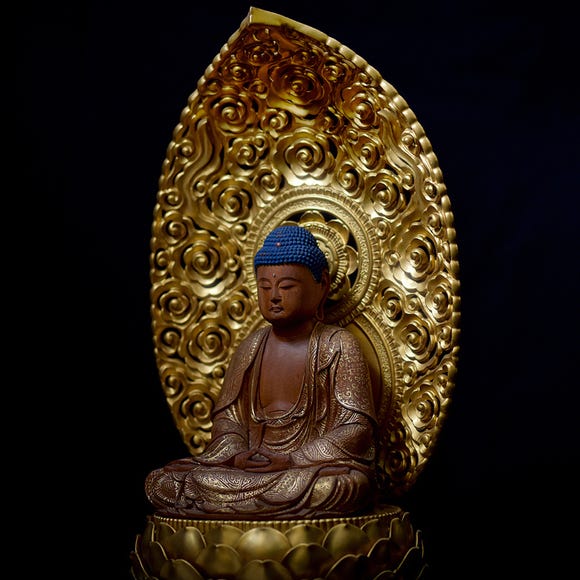
Yoshida Gennojo-Roho Kyoto Buddhist Altars
Gift Shops
Nijo Castle, Kyoto Imperial Palace
-
Events

kimono rental botan
Culture Experience
Shinsekai, Tennouji, Tsuruhashi
-
Coupons

Puppy Café Rio Kyoto
Culture Experience
Gion, Kawaramachi, Kiyomizu-dera Temple
-

Jukuseiniku-to Namamottsuarera Nikubaru Italian Nikutaria Sannomiya
Izakaya
Kobe, Sannomiya, Kitano
-

Kambei Sannomiyahonten
Yakiniku
Kobe, Sannomiya, Kitano
-

November Events in Kansai: Fun Festivals, Food, and Things to Do in Kyoto & Osaka
-

Everything You Need to Know About teamLab Biovortex Kyoto (2025 Insider Guide)
by: Wemmy Chau
-
Ad

Experiencing Manga as Culture, Not Just Reading It: Expo 2025 with Rumiko Takahashi
-
Ad

Recharge and Relax with a Healing Getaway at Kamenoi Hotel Toba
-
Ad

Visiting the Osaka–Kansai Expo? Enjoy These 5 Great Itineraries from Osaka-umeda for Nature and City Lovers
-
Ad

Discover Timeless Beauty: Kimono-en, a Web Magazine Exploring the Spirit of Kimono
Inspiration for Accommodations
-

Spacious Family Hotel in Namba: 20 Comfortable Stays for Family Fun
-
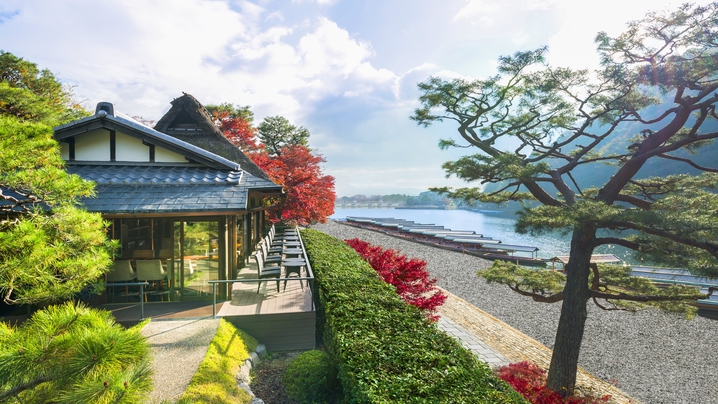
Charming Hotels to Enjoy the Spectacular Views of Arashiyama's Autumn Leaves from Your Room
-

Experience Stunning Views of Osaka Castle from Private Spaces: Top Hotels Near Osaka Castle
-
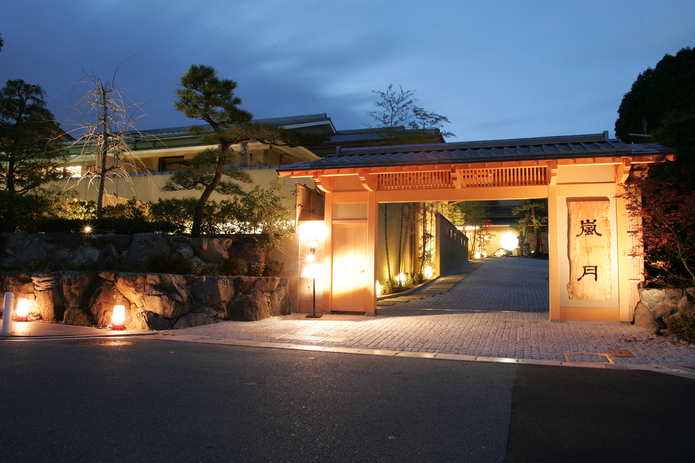
Recommended by Visitors! Arashiyama's Best-Rated Hotels
-

Family-Friendly Universal Studios Japan Hotel with Excellent Access
-
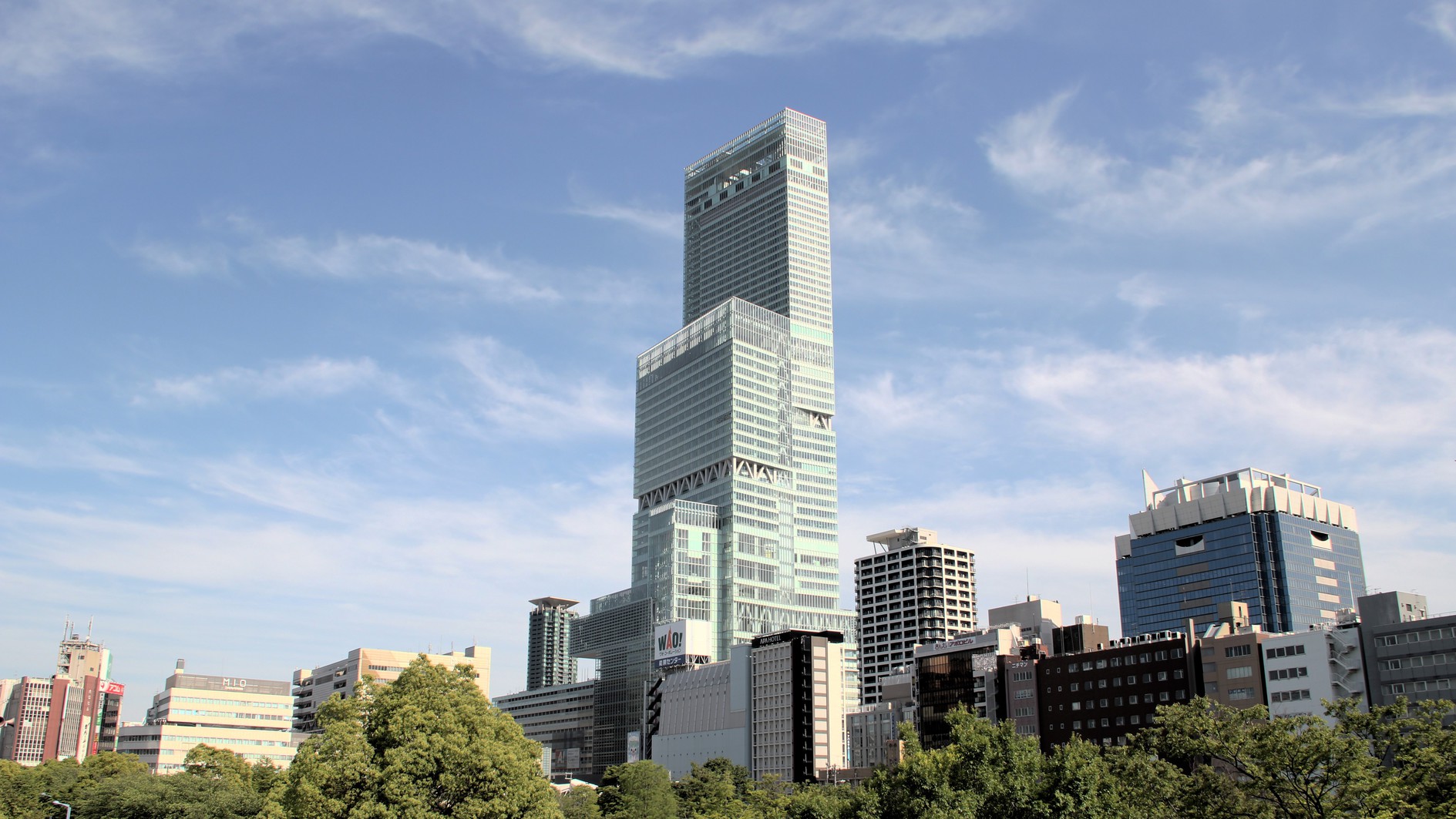
Enjoy a Comfortable Stay in Osaka! 10 Hotels with Convenient Airport Shuttle Services
-

Top 10 Recommended Hotels Near Namba Station with Great Access
-
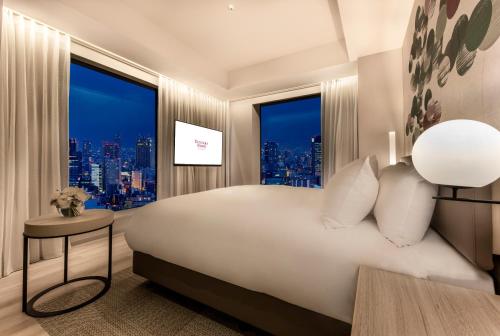
Enjoy Night Views from Your Room! Recommended Hotels in Namba Area
-

Kyoto Sightseeing Day Tour: Get the Most Out Of Kyoto's Scenic Areas With This Guide!
-

Enjoy a Deeper Connection to Japan With Fascinating Cultural Experiences in Kyoto and Osaka
by: James Davies
-

15 Handpicked Kyoto Tours: Exploring Japan's Ancient City
by: Himanshi Shah
-

Best Things to Do in Gion: How to Enjoy Kyoto's Geisha District
-

Ippudo Osaka and More: These 5 Ramen Restaurants in Osaka Are Going Viral
by: WESTPLAN
-

Popular Food at Universal Studios Japan
by: WESTPLAN
- #best gourmet Osaka
- #things to do Osaka
- #what to do in kyoto
- #what to bring to japan
- #best gourmet Kyoto
- #new years in Osaka
- #what to buy in nanba
- #Visiting Osaka
- #onsen tattoo friendly arima
- #daiso
- #Visiting Kyoto
- #best japanese soft drinks
- #japanese fashion culture
- #japanese convenience store snacks
- #japanese nail trends
















